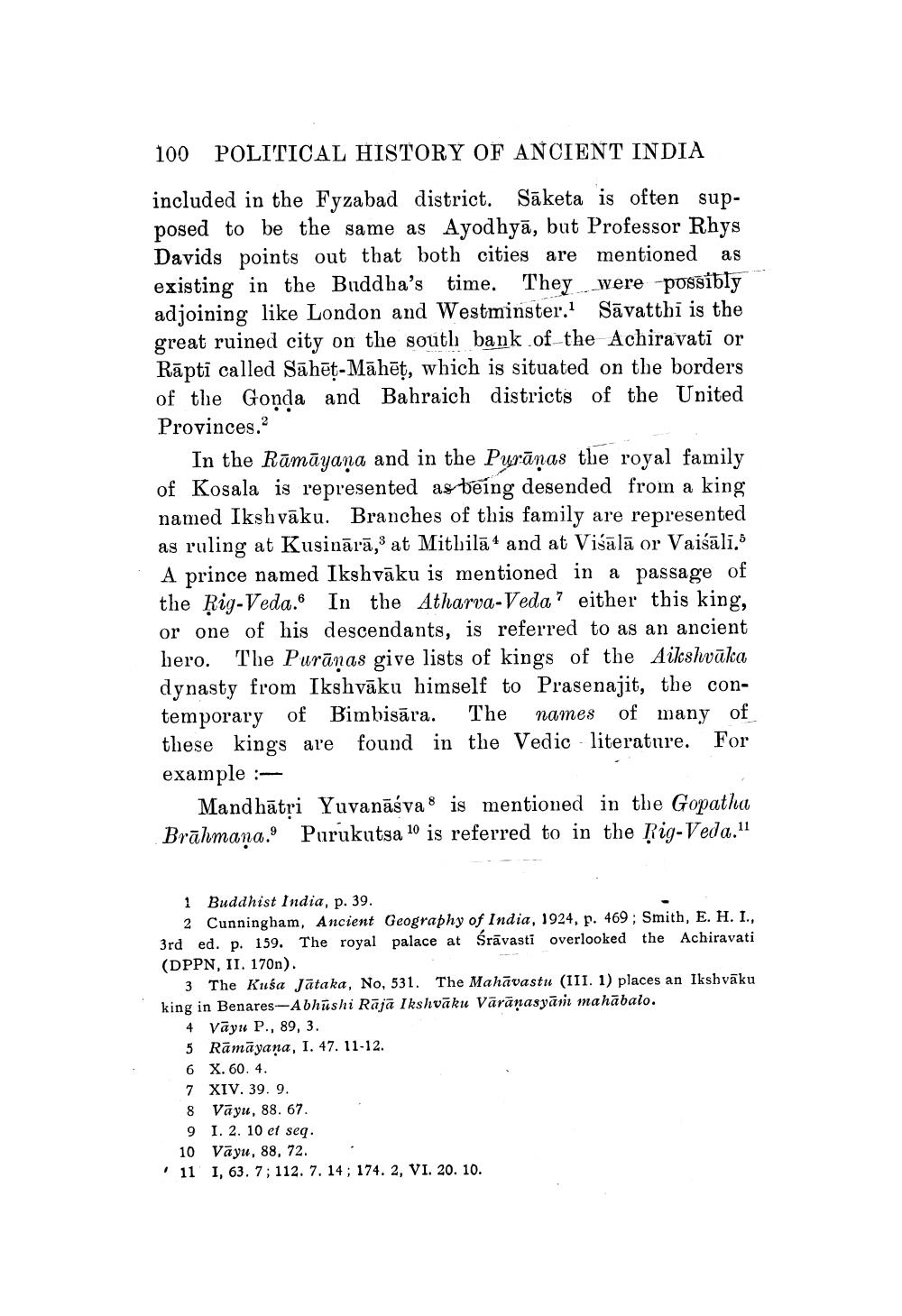________________
100 POLITICAL HISTORY OF ANCIENT INDIA included in the Fyzabad district. Sāketa is often supposed to be the same as Ayodhyā, but Professor Rhys Davids points out that both cities are mentioned as existing in the Buddha's time. They were possibly adjoining like London and Westminster. Sāvatthi is the great ruined city on the south bank of the Achiravati or Rāpti called Sāhēt-Māhēt, which is situated on the borders of the Gonda and Bahraich districts of the United Provinces.?
In the Rāmāyana and in the Purūnas the royal family of Kosala is represented as being desended from a king named Iksh vāku. Branches of this family are represented as ruling at Kusinārā, at Mithilā4 and at Viśālā or Vaisāli. A prince named Ikshvāku is mentioned in a passage of the Ķig-Veda. In the Atharva-Veda? either this king, or one of his descendants, is referred to as an ancient hero. The Purānas give lists of kings of the Aikshvāka dynasty from Ikshvāku himself to Prasenajit, the contemporary of Bimbisāra. The names of many of these kings are found in the Vedic literature. For example :
Mandhātri Yuvanāśva8 is mentioned in the Gopatha Brāhmaṇa.' Purukutsa 10 is referred to in the Rig Veda.ll
1 Buddhist India, p. 39.
2 Cunningham, Ancient Geography of India, 1924, p. 469; Smith, E. H. I., 3rd ed. p. 159. The royal palace at Srāvasti overlooked the Achiravati (DPPN, II. 170n).
3 The Kusa Jataka, No. 531. The Mahāvastu (II1. 1) places an Iksh vāku king in Benares-Abhushi Rājā Ikshvāku Vārānasyāni mahābalo.
4 Vāyu P., 89, 3. 5 Rāmāyana, I. 47. 11-12. 6 X. 60. 4. 7 XIV. 39. 9. 8 Vayu, 88. 67. 9 I. 2. 10 et seq. 10 Vayu, 88, 72. 11 1, 63. 7; 112. 7. 14; 174. 2, VI. 20. 10.




